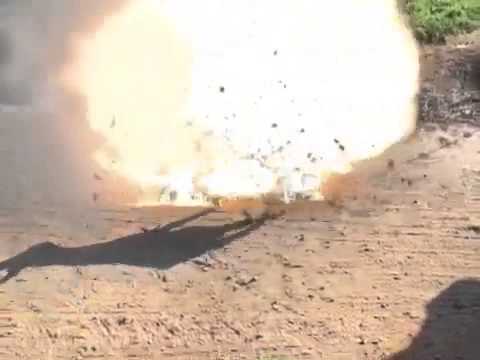
It’s been a little over a week since I posted, so I figure it’s about time. The mental dart I threw at the wall landed on outlining, so I’ll ramble on a bit about my process. A bit over twenty years ago, I took my first stab at trying to write something that I hadn’t been ordered to write by a teacher. I’d been into role-playing games for quite some time by then, and the crux of that (aside from number-mashy combat) is developing characters and storylines.

So, way back when, I made the synaptic leap to go from telling on-the-fly stories to writing one down. The attempt wound up meandering for a few dozen pages and collapsing. Some writers are adept at sitting down with an idea or two in their head and just typing willy nilly until they have a novel in front of them. (The good ones can even establish a cohesive plot while doing this; the rest keep content editors employed.)
Alas, I do not count myself among that type of writer, at least, not for novel length. A couple of my short stories worked that way though. For anything with length or (as I tend to prefer) some intricacies of plot, I found myself getting lost. Unlike Wymore, I couldn’t just light a goat on fire and follow it to the end of a story. (Perhaps it’s ‘Pick on Wymore day,’ perhaps I’m infringing on Defendi’s schtick, but the goat is still screaming so I’m doing it anyway.)

When I finally got around to trying again I decided I wasn’t going to run around in circles following smoldering hoof prints in the grass. I wound up building an outline that served as a backbone from which to hang the story I wanted to tell. (Granted, as most writers may or may not be willing to confess, that book wound up being monolithic – over 400k words… and still hasn’t seen the light of day. Hell, I’ve been afraid to look at it myself for years.)

But, it broke the wall.
Outlining for me has become de rigueur. Usually I’ll spend a few days randomly throwing plot nuggets on paper in the form of a sentence or two. Scenes for character development, plot turns, major events as well as minor, all drop into an Excel sheet in no particular order. Once I feel like I’ve dumped enough clay on the wheel, I start moving stuff around into an order that makes sense to me. Sometimes I’ll add more at this point; oh, who am I kidding – I always do.
With everything sorted into order, next comes chapter names. I’m not sure why that stuck with me, but I’m fond of them! (And no amount of burning goats will change that.)

So, now I’ve got an outline full of named chapter blurbs. These chapter segments vary from 500 words of detail to something as simple as ‘fight with demon here.’ (That was the chapter outline for Division Zero, Lex De Mortuis where Kirsten gets attacked by the demon in the abandoned skyscraper.)
This is not to say that the outline is immutable or iron-clad. Often, as I am writing the story out, something will occur to me or the characters will go off and do something that makes more sense than what I’d initially conceived. When this happens, I change stuff. I suppose to that regard, my writing style could be called a hybrid of outlining and ‘pantsing,’ with a heavier lean toward the outline.
The most significant example of a change occurred while I was writing Prophet of the Badlands. This is book one of a six-part series, and I had a general idea of how I wanted things to go for the entire series while writing Prophet. I got the idea to do that as a series at the same time I got the idea for Division Zero. Since Division Zero was a simpler story (one main character versus 5 + multiple antagonists) I decided to write it first. All the while I wrote Division Zero, it felt as though Althea (MC of Prophet) was standing behind me, arms crossed, foot tapping, asking me ‘is it my turn yet’ every fifteen minutes.

Property Andrew Hefter
Once I finished Division Zero 1 and began the querying process to get it published, I started on Prophet. This is a story about a girl with powers of healing in a blasted wasteland where medical technology is nonexistent. Naturally, she’s a valuable commodity. Althea is almost inhumanly sweet and tolerates a level of mistreatment that would break most people’s will. Throughout it all, she focuses on her desire to help people regardless of what they do to her. The story is about her finding courage.
Initially, she is quiet, timid, and afraid of how people will react if she uses her ‘other’ abilities to protect herself. At about the 55% (rough estimate) mark, the outline called for something to happen. (Pardon the vagary here; I’m trying not to spoil for those who haven’t read it.) At the time I outlined it, it made sense to me―a temporary reprieve at a particular place before the cycle of being grabbed by others looking to exploit her abilities continued.
However, Althea had other plans. She formed a strong emotional connection to another character that I had not anticipated. When it came time for the outlined event to occur, she put her foot down and refused. Considering primary story arc involved her evolution from a meek and timid “All I want to do is help people no matter how mean they are” person to having the inner strength to stand up for herself, I couldn’t say no.
So, the outline changed.
And the entire series changed course because of it.
I’m not trying to say that outlining is better than pantsing. For me, it is―but a writer has to do what works for them. Especially with complex plots, I need to have an idea of where I’m heading or I’m going to get lost on the way.
Probably a good point for me to cease rambling before the goat explodes.

And while you’re frittering away time on the Internet, check out these other blogs:
https://jameswymore.wordpress.com/
http://www.robertjdefendi.com/

